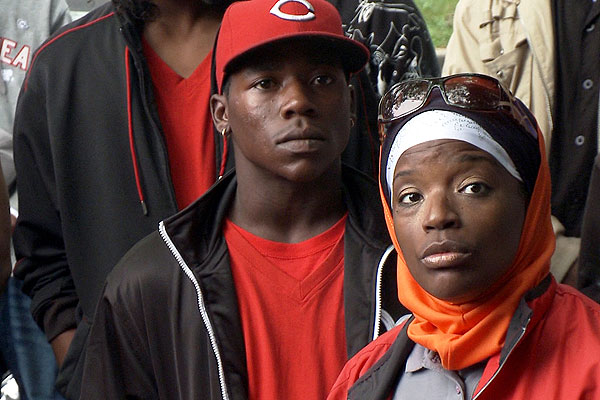
Ameena Matthews, violence interrupter, from The Interrupters
The Interrupters, the new documentary by Alex Kotlowitz and Steve James about CeaseFire, is making its way around the country, and will screen on WTTW later this year as part of a Kartemquin retrospective. (It’s inspired by Kotlowitz’s 2008 New York Times Magazine profile of the group.) It’s an innovative idea, but I was interested to learn that it’s not entirely new, not even to Chicago. In his book Making the Second Ghetto: Race & Housing in Chicago, 1940-1960, Arnold R. Hirsch describes a similar program by the Chicago Commission on Human Relations, which was convened in the wake of Detroit’s destructive 1943 riots. It doesn’t have the grounding in epidemiology, but the basic idea is identical:
The omnipresent shadow of 1919 [a weeklong riot over beaches–it’s curious, the role of beaches and pools in race and civic policy in the 20th century, see also The Power Broker] provided a spur to action and a guide. [Thomas H.] Wright’s response to the stimulus furnished by the specter of 1919 was the creation of a sophisticated machine dedicated to the prevention, or, at worst, control of interracial violence. One wall in the CHR office was adorned with a large "tension map" of Chicago. Commission staff members identified attacks on individuals or property, demonstrations dispersed by police, and housing project sites by sticking colored pins in the map. An index card file contained a brief description of each reported incident. Word of potentially dangerous situations was received through a network of individuals ("listening posts") scattered throughout the city who kept a wary eye on their own neighborhoods for the CHR. Wright had gathered the names of people interested in the commission’s work and asked their cooperation in collecting information and reporting rumors. Not merely passive receivers of information, these allies, white and black, frequently rode through their respective areas in streetcars, listening to conversations in the attempt to glean useful bits of knowledge. Consequently, Wright and the CHR staff often knew of impending trouble before the police did. First established in 1945, the "listening posts" proved so effective that their numbers were greatly augmented in succeeding years.
The idea of a "tension map" also echoes the "predictive analytics" explored by the CPD, under the direction of former OpenTable IT director Brett Goldstein: "The city, says CPD spokesman Michael Fitzpatrick, began collecting electronic data earlier than most departments, in the late 1990s, partly thanks to former assistant deputy superintendent Ron Huberman, AM’00, MBA’00."
Before the computer age, the idea of using statistical and cartographic analysis of crime as a predictive function of police work originated, so far as anyone I’ve read can tell, under the watch of Chicago police superintendent O.W. Wilson (whose tenure has parallels to Jody Weis’s stormy couple years):
O.W. Wilson, who worked with [August] Vollmer and created an advanced training program for officers, was the first to mention and define the term crime analysis, in the first edition of his book Police Administration in 1963….
[snip]
In his lesser-known book Police Planning, which was first published in 1952, Wilson discusses crime mapping and crime analysis, although he does not use those terms. In the second edition of that volume, he outlines the structure of police planning to include a "cartography unit," which, among other things, "provides technical advice… in depicting crime trends or occurrences… in located places of arrest," and a "statistics unit," which includes many of the functions of crime analysis that are still practiced today.
Wilson is rightly considered–along with his mentor, August Vollmer–as essentially the inventor of the urban police department as we know it. So I was a bit surprised to see his techniques being used a decade before he put them to paper, by a Commission on Human Relations
Photograph: Kartemquin Films


